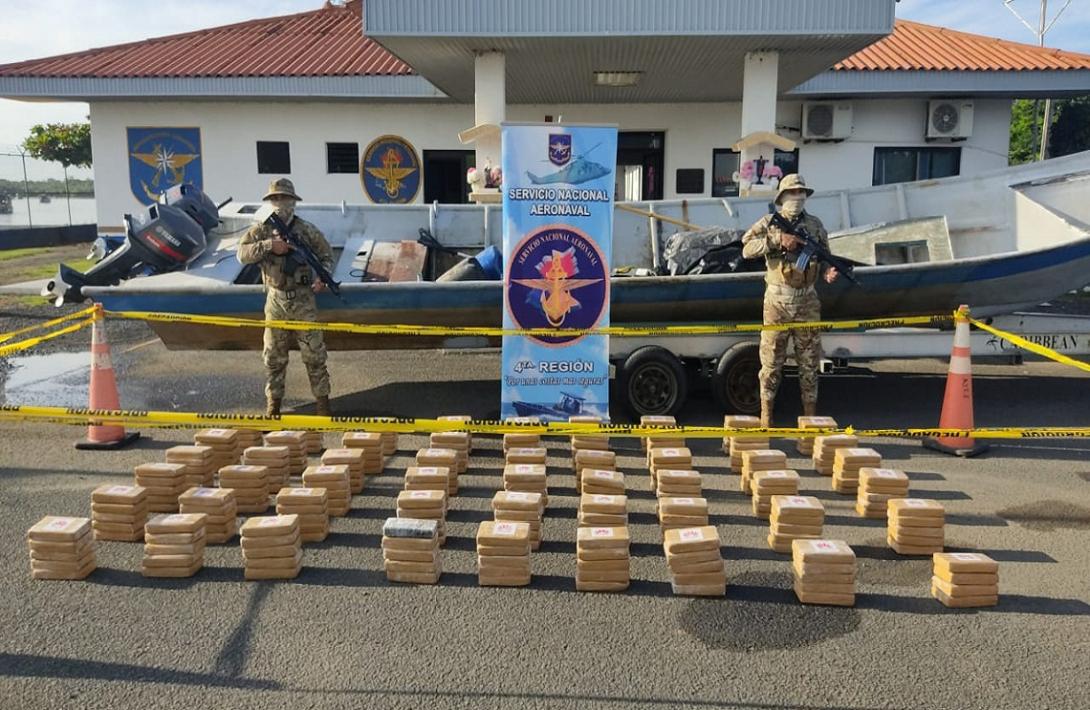Thanks to the effort and commitment of 40 countries.
471 tons of narcotics were found by troops during this year in the VII and VIII of the Naval Campaign Orion damaging in more than 9,956 million dollars the finances of the drug trafficking organizations in 90 days.
The Government of Colombia through the National Navy in a joint, coordinated and interagency work with the National Army, the Colombian Air Force, the National Police, the Attorney General's Office, the Directorate of National Taxes and Customs, the Information and Financial Analysis Unit, and Migracion Colombia, successfully carried out for 45 days, the VIII of the Naval Campaign against Drug Trafficking Orion, the largest multilateral operation against illicit drug trafficking in history.
Thanks to the efforts and commitment of the 40 countries that participated in the last campaign, it was possible to prevent nearly 415 million doses of drugs were marketed and consumed throughout the world. Troops found 145,3 tons of cocaine hydrochloride, 66,2 tons of marijuana, 8.6 tonnes of hashish, 74,3 kg of heroin and 2.5 tons of synthetic drugs, in development of more than 482 counter narcotics operations in land, air, sea, and river.
BENEFIT TO GLOBAL PUBLIC HEALTH
These results not only represent substantial gains in the reduction of the supply, but in the same way it is a unprecedented benefit for global public health, taking into account the studies carried out by the Government of the united States, where a ton of cocaine represents 500 new consumers, 1,025 medical emergencies, 10 deaths due to overdose and 650 thousand dollars of additional costs in public health. The findings of the two versions of Orion in 2021 prevented 130,850 new consumers and 268,243 medical emergencies, preventing 2,617 deaths from overdose and they managed to save 170 million dollars in additional public health expenses to all countries of the planet.
The latest report of the United Nations Office on Drugs and Crime (UNODC), indicates that around 275 million people (15 - 64 old) used drugs in 2019 and approximately 36.3 million users reported suffering serious disorders as a result of addiction, in the same way, about half a million deaths in that year are related to drug use.
DRUG TRAFFICKING DESTROYS THE ENVIRONMENT
The production of illicit drugs in laboratories uses chemical precursors, whose residues are put in the soil and water sources of the woods and forests, causing high levels of pollution and serious consequences for the proper development of the fauna and flora; these poisonous substances pollute the rivers and streams that supply drinking water to the inhabitants, by modifying their composition and structure.
In order to establish illicit cultivation, part of the tropical forest is destroyed by cutting down trees and then the vegetation of the chosen perimeter is burned. Additionally, the loss in biodiversity associated with the destruction of ecosystems is enormous, since currently 2,500 types of animals have been identified under threat of extinction due to deforestation. One hectare of deforested forest is equivalent to at least 14,000 trees and 600 different animals. To produce the 145.3 tons of cocaine found in this last campaign, 73,744 hectares of jungles and forests were destroyed and numerous bodies of water contaminated.
In an effort to curb all this environmental impact, the effective deployment of units and troops during this campaign, led to the seizure of 2,593 tonnes of solid supplies, 609,028 gallons of liquid precursors, 87,365 kilos of coca leaves, 92,500 clumps of marijuana, as well as the destruction of 668 infrastructures illegal used for all of these processes of extraction and transformation of drugs, the production of 36.3 tons of narcotics. 18,423 hectares of forests, banks and 21,780 animals have been recovered.
SUCCESS OF INTERNATIONAL COOPERATION
The fight against drug trafficking has a common and shared responsibility of which it has been possible to raise awareness in countries and institutions around the world with each new Naval Campaign Orio. This is a reflection of the new strategic alliances that have been generated in the framework of international cooperation agreements to counter the threat of transnational criminal organizations.
That's why, the last two versions of Orion have counted on the historic participation of 102 institutions from 40 countries, including: algeria, Antigua and Barbuda, Argentina, Barbados, Belize, Brazil, Canada, Chile, Colombia, Costa Rica, Dominica, Dominican republic, Ecuador, united States, Spain, El Salvador, France, Grenada, Guatemala, Guyana, Honduras, Ireland, Cayman Islands, Italy, Jamaica, Mexico, Netherlands, Panama, Paraguay, Peru, Portugal, United Kingdom, Dominican republic, St. Lucia, St. Kitts, St. Vincent and The Grenadines, Senegal, Sweden, Suriname, Trinidad and Tobago, and Uruguay.
Each of the participating institutions proved its means and Resources, which together make 126 ships, 148 maritime interceptor boats, 30 air-maritime patrol boats or aircraft and 5 drones, integrated under the coordination of multiple operations centers and intelligence fusion centers with the sole objective of hitting drug trafficking organizations.
This is how the Naval Campaign against Drug Trafficking Orion reflects the holistic effort and the multilateral, regional and transnational commitment conducted by allied countries, to work together in the reduction of the supply of illicit drugs, contributing to the security and comprehensive development of the territories, as well as environmental protection, positioning itself as the largest multilateral operation against drug trafficking in history.
Source: press-Colombian Navy





